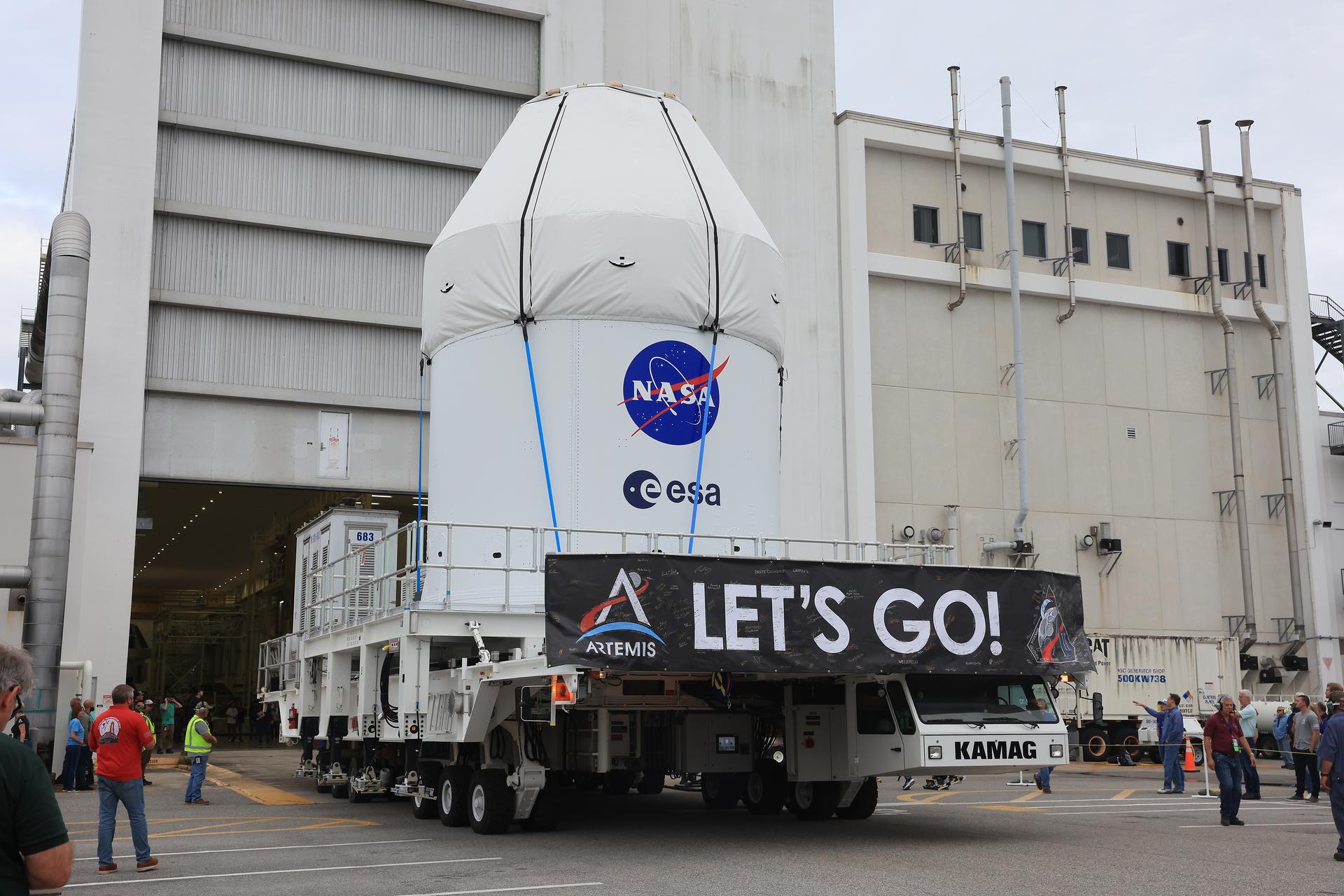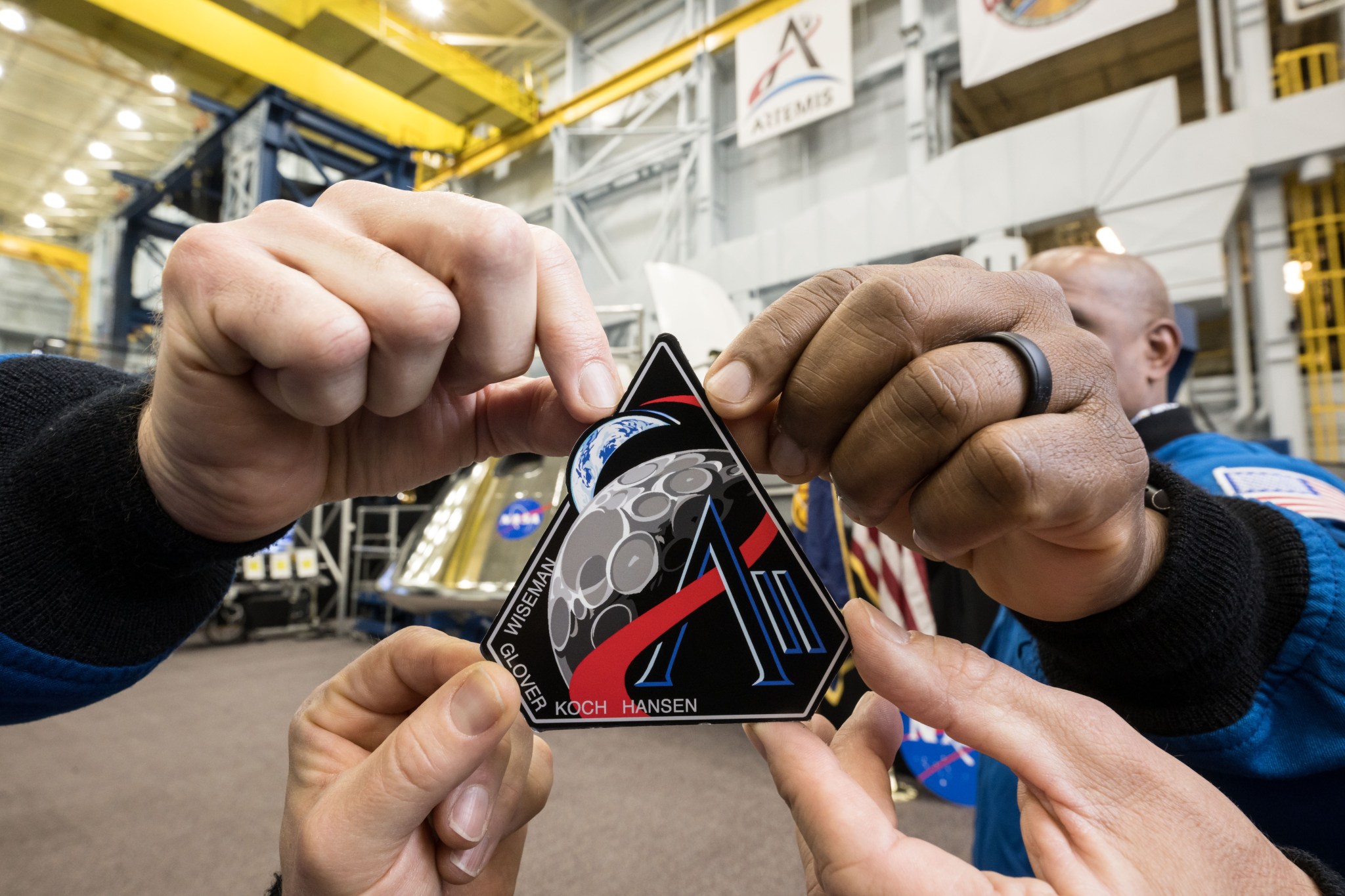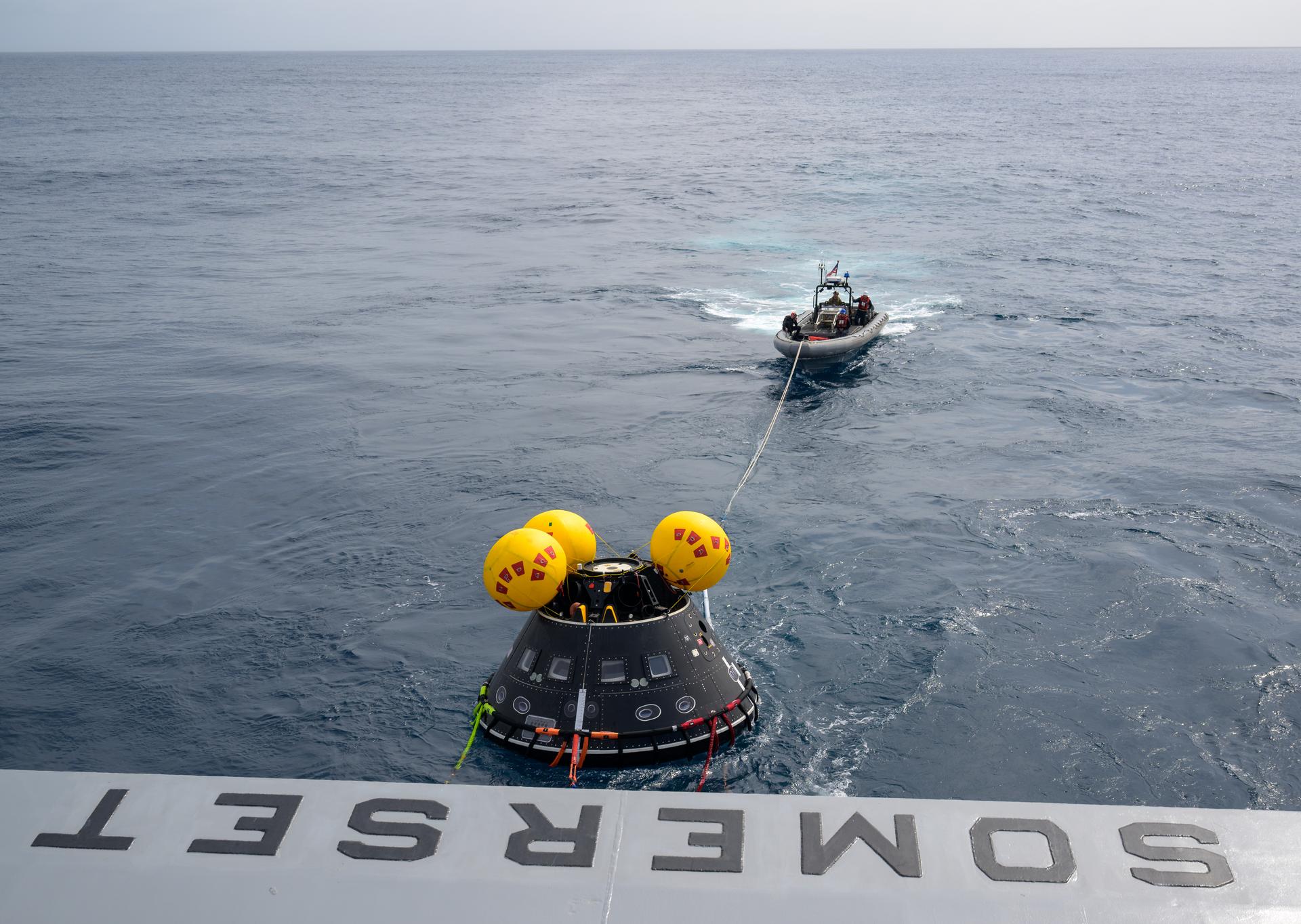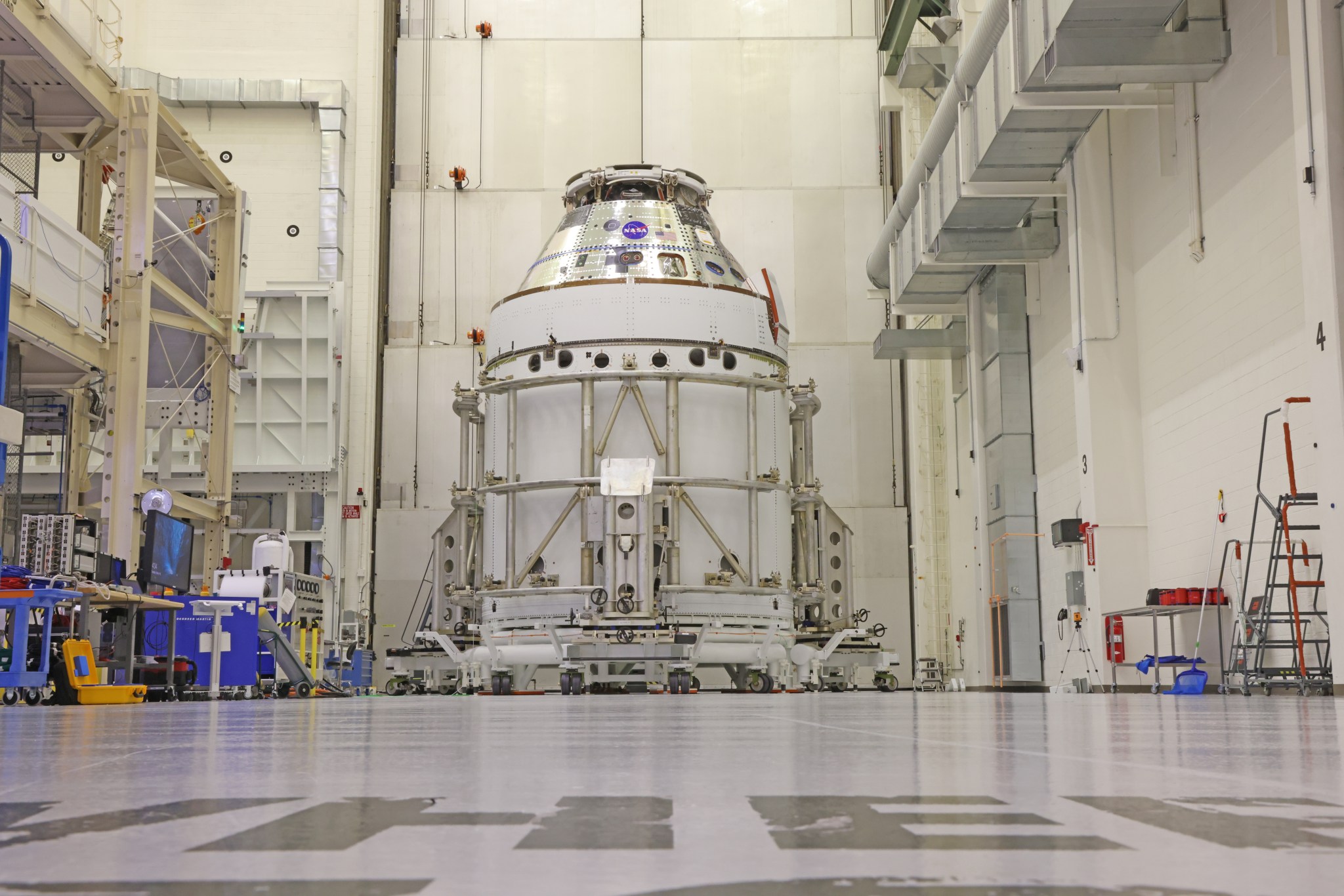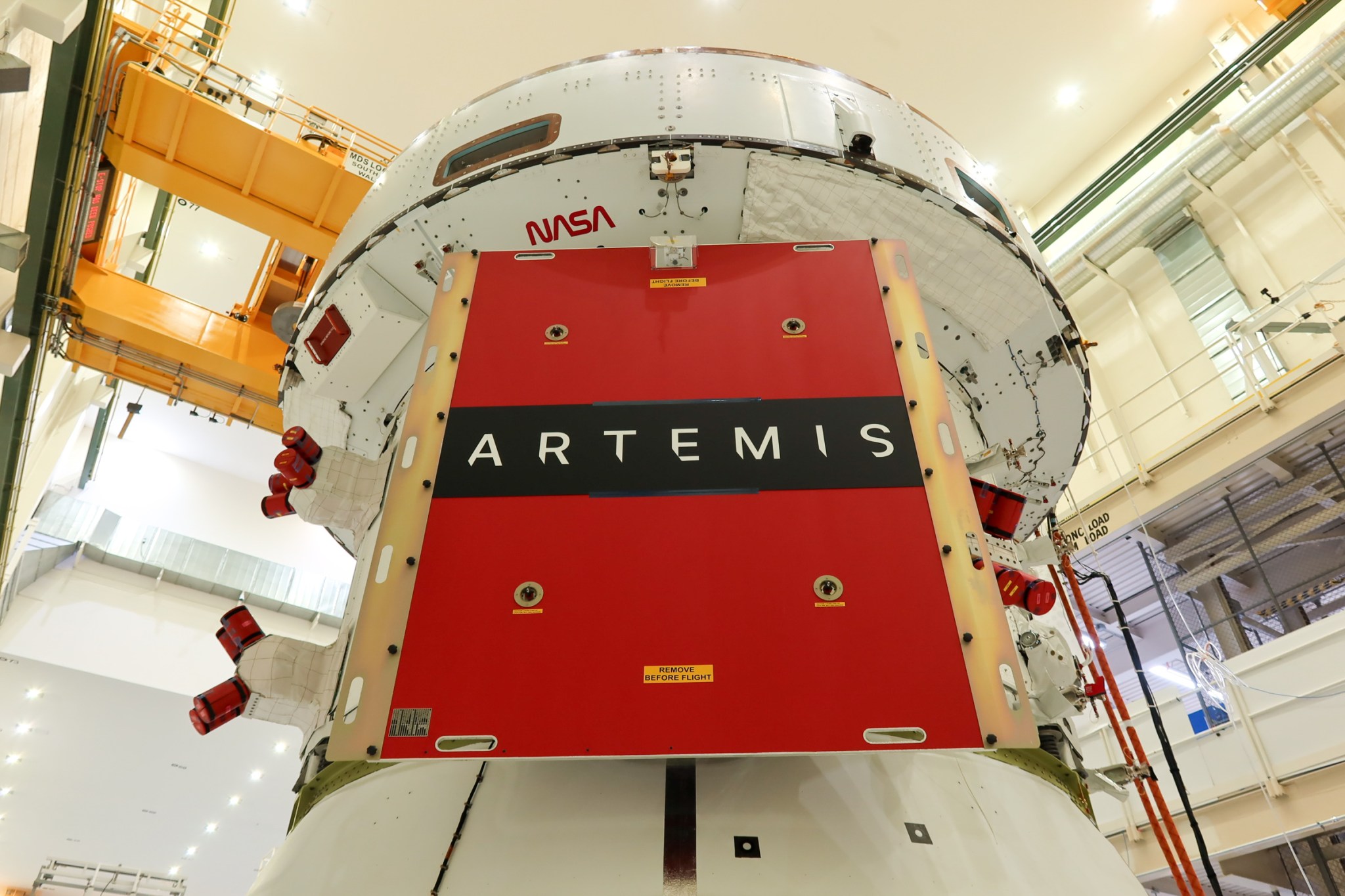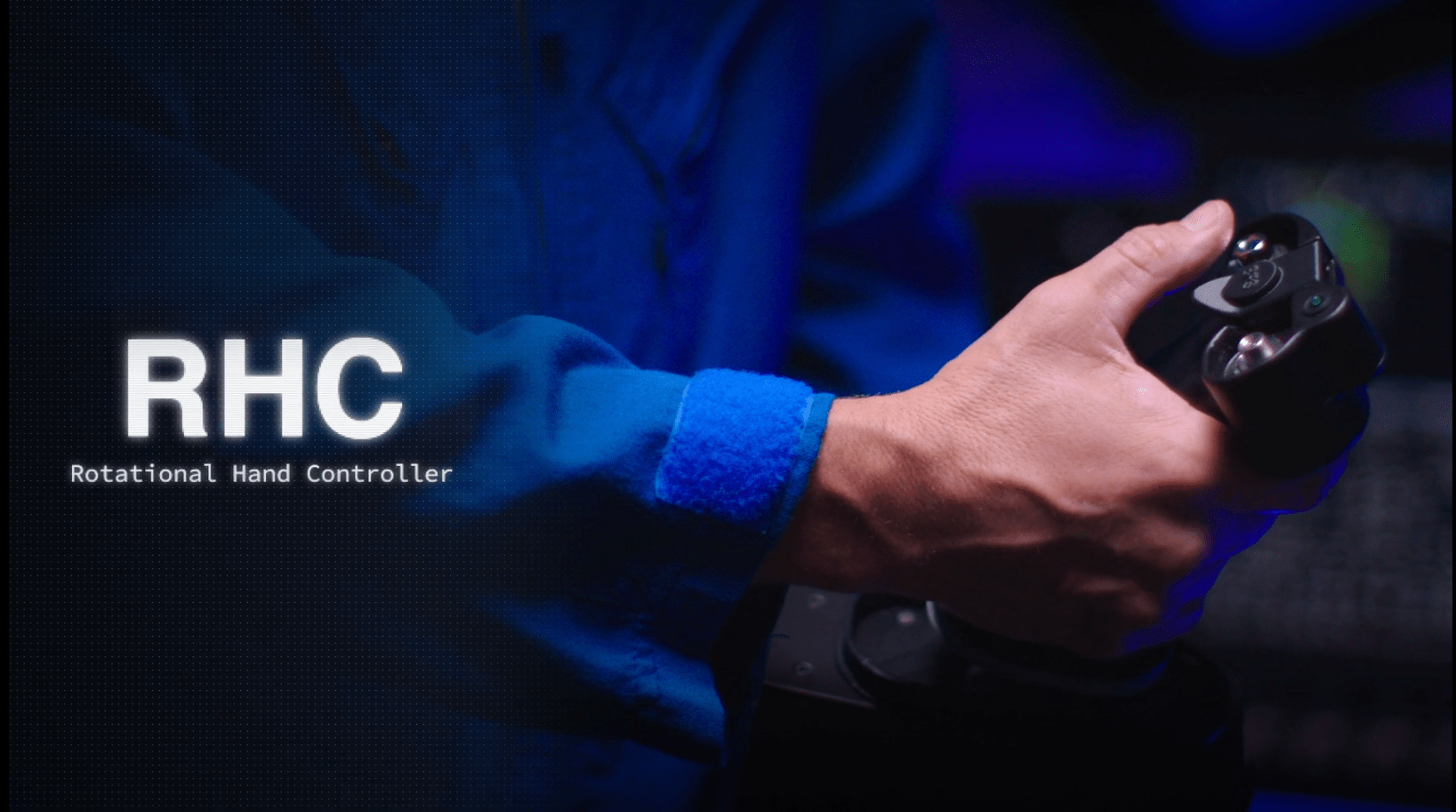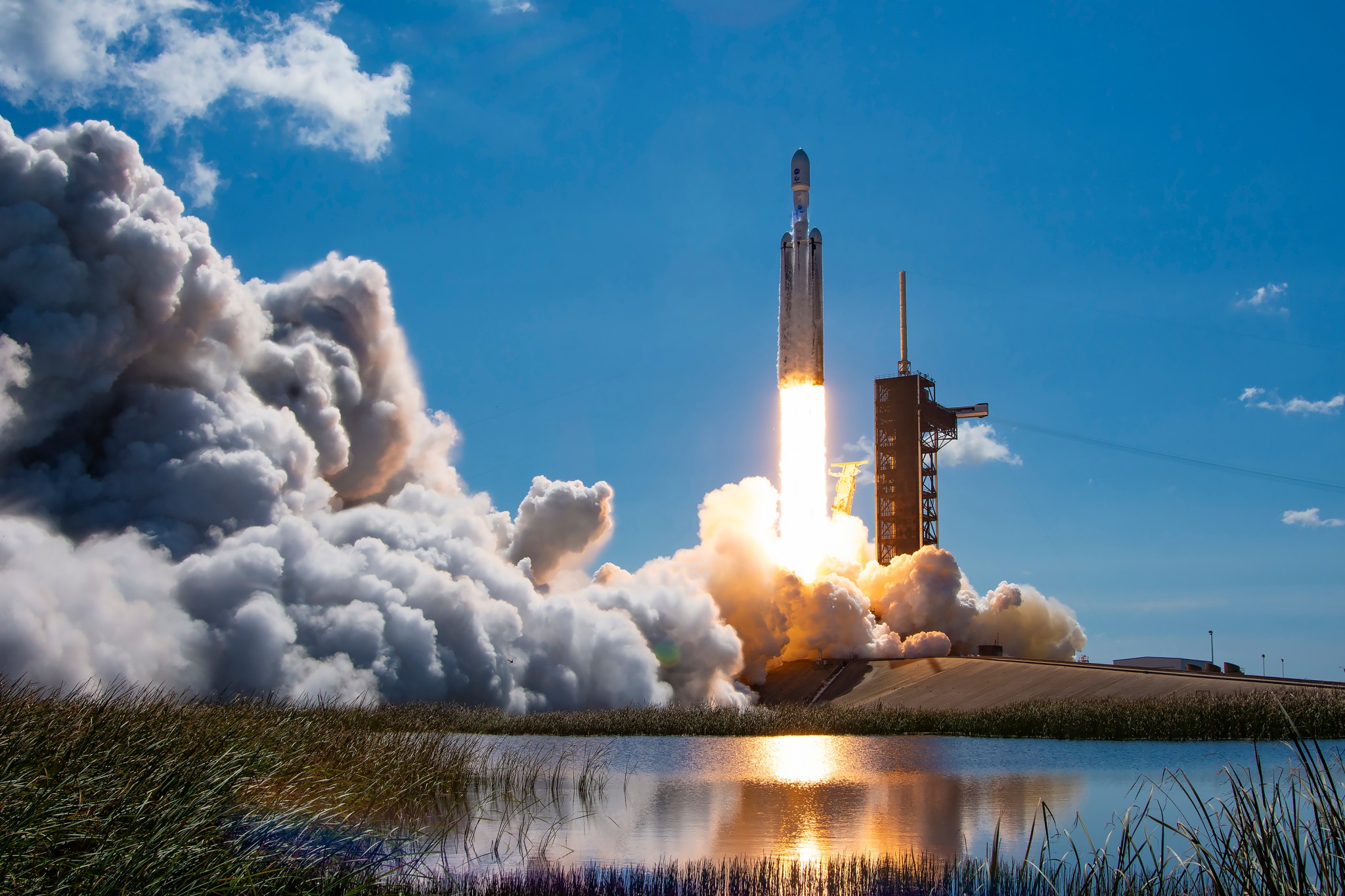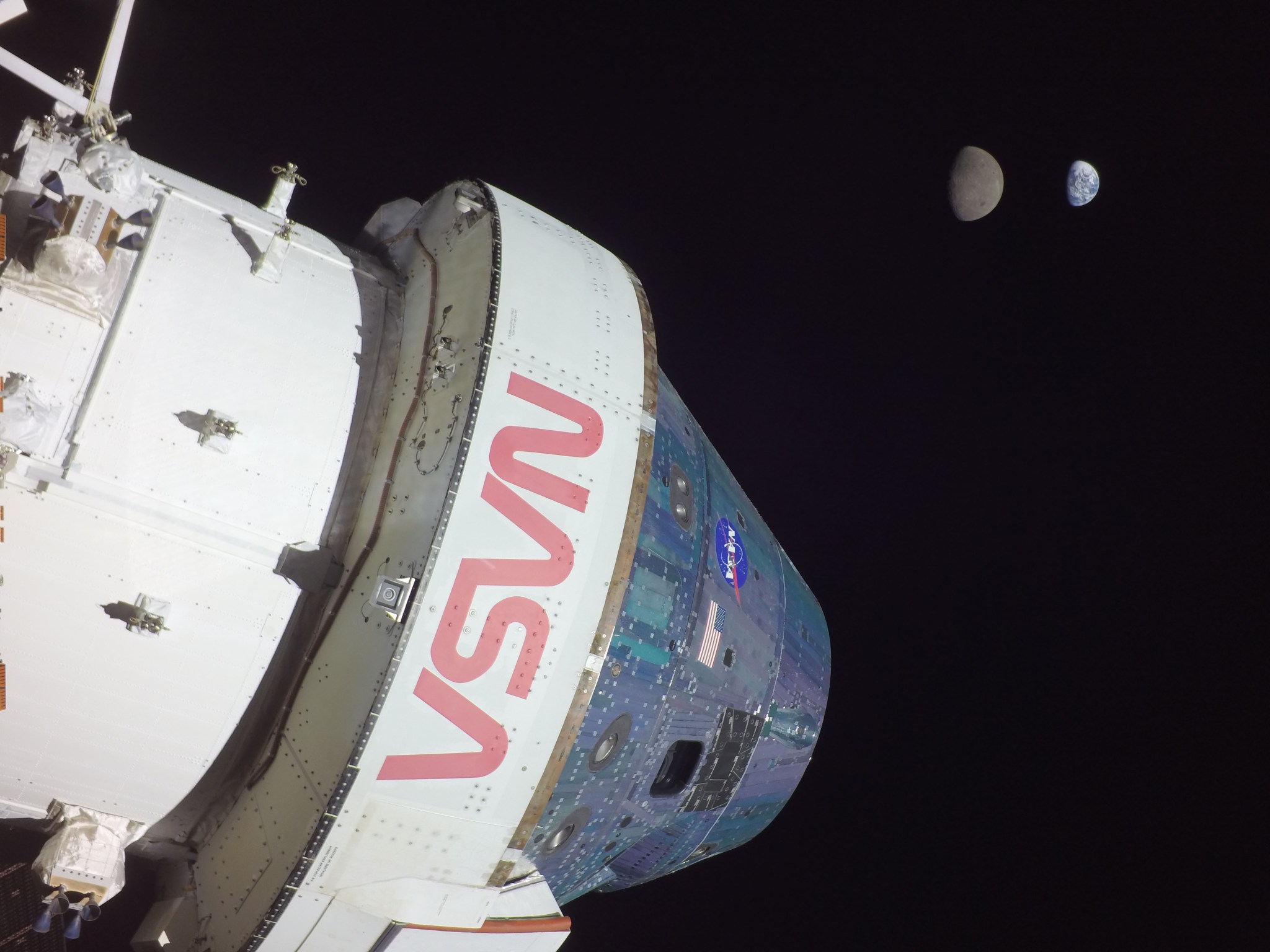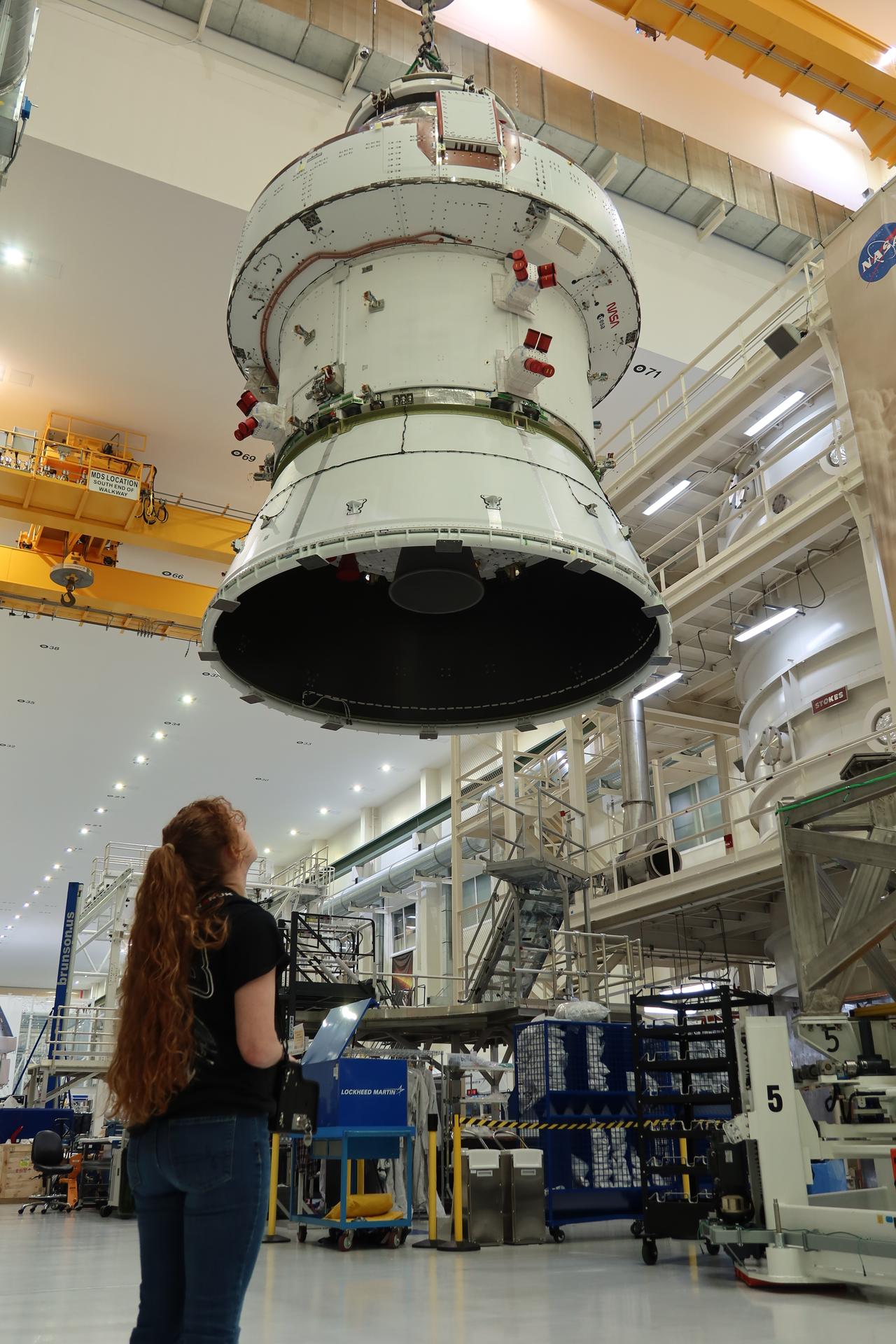Technicians move the Orion spacecraft for NASA’s Artemis II test flight out of the Neil A. Armstrong Operations and Checkout Building to the Multi-Payload Processing Facility at Kennedy Space Center in Florida on Saturday, May 3, 2025. NASA/Kim Shiflett Engineers, technicians, mission planners, and the four astronauts set to fly around the Moon next year on Artemis II, NASA’s first crewed Artemis mission, are rapidly progressing toward launch. At the agency’s Kennedy Space Center in Florida, teams are working around the clock to move into integration and final testing of…
Read MoreTag: Orion Multi-Purpose Crew Vehicle
Artemis II Insignia Honors All
Robert Markowitz The four astronauts who will be the first to fly to the Moon under NASA’s Artemis campaign have designed an emblem to represent their mission that references both their distant destination and the home they will return to. The crew unveiled their patch in this April 2, 2025, photo. The crew explained the patch’s symbolism, and its play on the abbreviation of Artemis II to AII, with the following description: The Artemis II test flight begins when a mighty team launches the first crew of the Artemis generation.…
Read MoreNASA Trains for Orion Water Recovery Ahead of Artemis II Launch
4 min read Preparations for Next Moonwalk Simulations Underway (and Underwater) The Crew Module Test Article (CMTA), a full scale mockup of the Orion spacecraft, is seen in the Pacific Ocean as teams practice Artemis recovery operations during Underway Recovery Test-12 onboard USS Somerset off the coast of California, Saturday, March 29, 2025. NASA/Bill Ingalls Preparations for NASA’s next Artemis flight recently took to the seas as a joint NASA and Department of Defense team, led by NASA’s Exploration Ground Systems Program, spent a week aboard the USS Somerset off the…
Read MoreNASA’s Artemis II Orion Service Module Buttoned Up for Launch
Technicians with NASA and Lockheed Martin fitted three spacecraft adapter jettison fairing panels onto the service module of the agency’s Orion’s spacecraft. The operation completed on Wednesday, March 19, 2025, inside the Neil A. Armstrong Operations and Checkout Building at NASA’s Kennedy Space Center in Florida. The European-built service module is the powerhouse that will propel the spacecraft to the Moon. Its four solar array wings which were installed to its exterior in early March. The latest addition of fairing panels on Orion’s service module will protect the solar array…
Read MoreEngineers Install Orion Solar Array Wings for Artemis II
Technicians with ESA (European Space Agency) and Airbus installed the four solar array wings on NASA’s Orion spacecraft for Artemis II on March 3. The solar array wings, attached to the service module, deploy after Orion reaches space to power the spacecraft. Orion’s service module provides propulsion, thermal control, and electrical power, as well as air and water for the crew during their mission around the Moon. Each solar array wing has 15,000 solar cells to convert sunlight to electricity and is nearly 23 feet in length when fully deployed.…
Read MoreGuiding Orion: Jorge Chong’s Mission to Advance Deep Space Exploration
Jorge Chong is helping shape the future of human spaceflight, one calculation at a time. As a project manager for TRON (Tracking and Ranging via Optical Navigation) and a guidance, navigation, and control (GNC) test engineer in the Aeroscience and Flight Mechanics Division, he is leading efforts to ensure the Orion spacecraft can navigate deep space autonomously. Jorge Chong in front of the Mission Control Center at NASA’s Johnson Space Center in Houston when he helped with optical navigation operations during Artemis I. Image courtesy of Jorge Chong “GNC is…
Read MoreHow to Fly NASA’s Orion Spacecraft
During the Artemis II mission to the Moon, NASA astronauts Reid Wiseman and Victor Glover will take control and manually fly Orion for the first time, evaluating the handling qualities of the spacecraft during a key test called the proximity operations demonstration. This is how to fly Orion. On NASA’s Artemis II test flight, the first crewed mission under the agency’s Artemis campaign, astronauts will take the controls of the Orion spacecraft and periodically fly it manually during the flight around the Moon and back. The mission provides the first…
Read MoreNASA Kennedy Top 24 Stories of 2024
A SpaceX Falcon Heavy rocket carrying NASA’s Europa Clipper spacecraft lifts off from Launch Complex 39A at NASA’s Kennedy Space Center in Florida at 12:06 p.m. EDT on Monday, Oct. 14, 2024. SpaceX From sending crew members to the International Space Station to launching a spacecraft to Jupiter’s icy moon Europa to determine if it could support life, 2024 was a busy record setting year for NASA and its partners at Kennedy Space Center in Florida. JANUARYFirst Lunar Lander Takes Flight The first flight of NASA’s CLPS (Commercial Lunar Payload…
Read MoreArtemis I Radiation Measurements Validate Orion Safety for Astronauts
On flight day 13, Orion reached its maximum distance from Earth during the Artemis I mission when it was 268,563 miles away from our home planet. Orion has now traveled farther than any other spacecraft built for humans. Credit: NASA NASA’s Orion spacecraft is designed to keep astronauts safe in deep space, protecting them from the unforgiving environment far from Earth. During the uncrewed Artemis I mission, researchers from NASA, along with several collaborators, flew payloads onboard Orion to measure potential radiation exposure to astronauts. Radiation measurements were taken inside…
Read MoreNASA’s Orion Spacecraft Gets Lift on Earth
Crane operator Rebekah Tolatovicz, a shift mechanical technician lead for Artic Slope Regional Corporation at NASA’s Kennedy Space Center in Florida, operates a 30-ton crane to lift the agency’s Artemis II Orion spacecraft out of the recently renovated altitude chamber to the Final Assembly and Systems Testing, or FAST, cell inside NASA Kennedy’s Neil A. Armstrong Operations and Checkout Building on April 27. During her most recent lift July 10, Tolatovicz helped transfer Orion back to the FAST cell following vacuum chamber qualification testing in the altitude chamber earlier this…
Read More